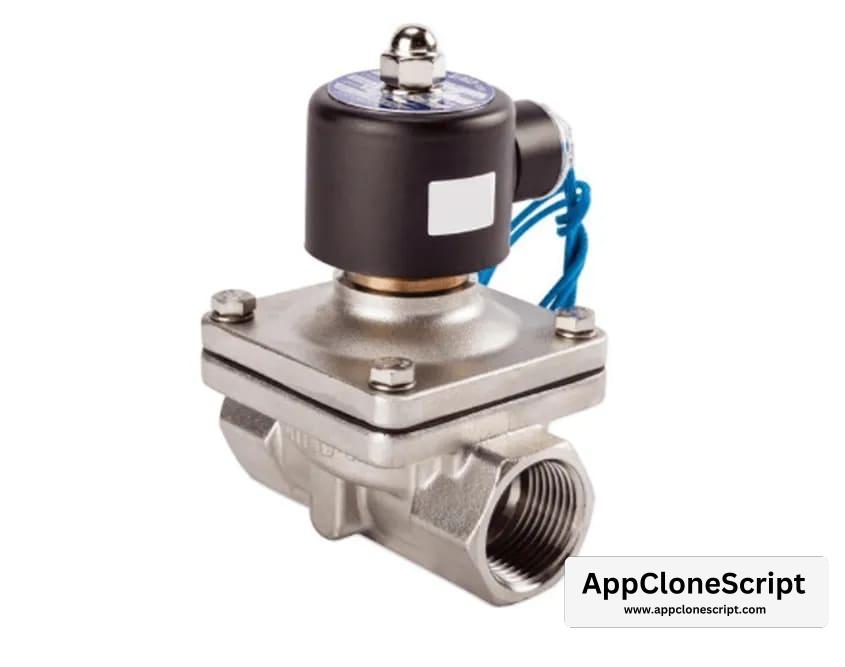It is important to note that control valves are used in almost all industries so its characteristic is geared towards the management of flow and pressure of a system. That is why knowing more about the various kinds of valves, and how they work, will give you a better understanding when selecting the kind of valves for your applications. This blog seeks to discuss different types of valves, the roles that they play and the applications that they are most commonly used in.
1. Globe Valves
The globe valves are one of the most widely used valves in process plants and industries. They include a spherical body with an internal divider of the inlet and outlet. The valve closes by a disk that has to be up and down to control the flow of the fluid. Globe valves are recognized to offer rather outstanding throttling characteristics, as such it is quite suitable for use where some degree of flow regulation would be required.
How They Work
When the valve is opened, the disk moves to an amount from the seat to let close through and open up. The flow direction is normal to the disk’s motion, thereby inhibiting turbulence and providing better control of the flow rate. Globe valves, as you will note, are designed to create substantial pressure drop across the valve, which can be a factor of concern in certain systems.
2. Ball Valves
Another type of control valve is the ball valve. They contain a round closure element (the ball) which revolves to regulate opening. Ball valves provide fast operation and low-pressure drop characteristics, therefore making them suitable for on/off control duties.
How They Work
In this case, the position of the ball will contain an opening that shall correspond to the pipeline cross-section when it is open. It means that if the ball is turned 90 degrees it will block the valve and it will stop working. One of the specific uses of ball valves is shown in Irrigation valve systems where a quick shut-off is desirable.
3. Butterfly Valves
Butterfly valves are principally tied by a disc that lies in the pipeline. This disc serves as an on/off control and as a fast control of flow rate. Butterfly valves feature a simple structure disc design which makes them light in weight and compact hence suitable for large-diameter pipelines.
How They Work
In this position, the inlet pressure acting on the cullet pushes the disc to a lateral position parallel to the intended flow of the fluid. When shut it is perpendicular to the flow and thus is equivalent to closing the flow off completely. Because of its operational efficiency and compact design, the butterfly valve is widely used in the water supply and wastewater industry.
4. Check Valves
Check valves, also known as non-return valves, are designed to prevent backflow in a system. They allow fluid to flow in one direction only, ensuring that the system operates efficiently and safely.
How They Work
Check valves use a closure element, typically a disk or ball, that moves in response to fluid flow. When the flow is in the correct direction, the closure element lifts off the seat, allowing passage. If the flow reverses, the closure element returns to the seat, preventing backflow. These valves are crucial in applications like irrigation systems, where backflow can contaminate the water supply.
5. Pressure Relief Valves
Automatic pressure release valves are meant to open and release the gas or fluid in a system, whenever the pressure inside the system exceeds a certain limit. This kind of valve is very important in preventing users, and more importantly, their equipment from overpressure.
How They Work
In spring-loaded pressure relief valves, a certain pressure is sought to be maintained using a spring. This pressure is called the set point and when the internal pressure exceeds this point, the valve is forced open relieving pressure from the valve and the surrounding system. When pressure is restored to normal the valve automatically closes. These valves find extensive use in various industries and may also be used in irrigation systems to prevent pipe or fitting breaks.
6. Irrigation Valves
These valves are customarily used in Irrigation systems; assisting in regulating the supply of water to plants and crops.
There are different types of irrigation valves such as solenoid valves, manual valves, and hydraulic valves.
How They Work
Solenoid Valves: The flow of water in these valves is regulated by an electromagnetic coil. When energized, the coil pulls a plunger that opens the valve and makes water come through. It also has the feature where when it is de-energized the spring mechanism moves a rod to close the valve. Solenoid valves are known to be commonly used in automated irrigation systems.
Manual Valves: The operating of these valves is a manual one, this is in line with the name given to them – manual valves. They are fairly uncomplicated structures and can be perfect for small irrigation systems.
Hydraulic Valves: These valves use the force generated from the hydraulic system to regulate the flow of water. They are mostly used in bigger, hierarchical systems of irrigation where needed the ability to manage the water flow.
Conclusion
It is critical to discuss the control valve and other types of control valves to get a clear understanding of the control valves essential in system design and operation. From accurate control of the flow rate, and backflow prevention to pressure management, there is a control valve for every application. In irrigation systems, the proper choice of valve also makes a big difference in water usage and the health of the plants. This way, you understand the specific type of valve more intimately and can make better choices that will improve your systems’ performance and durability.
